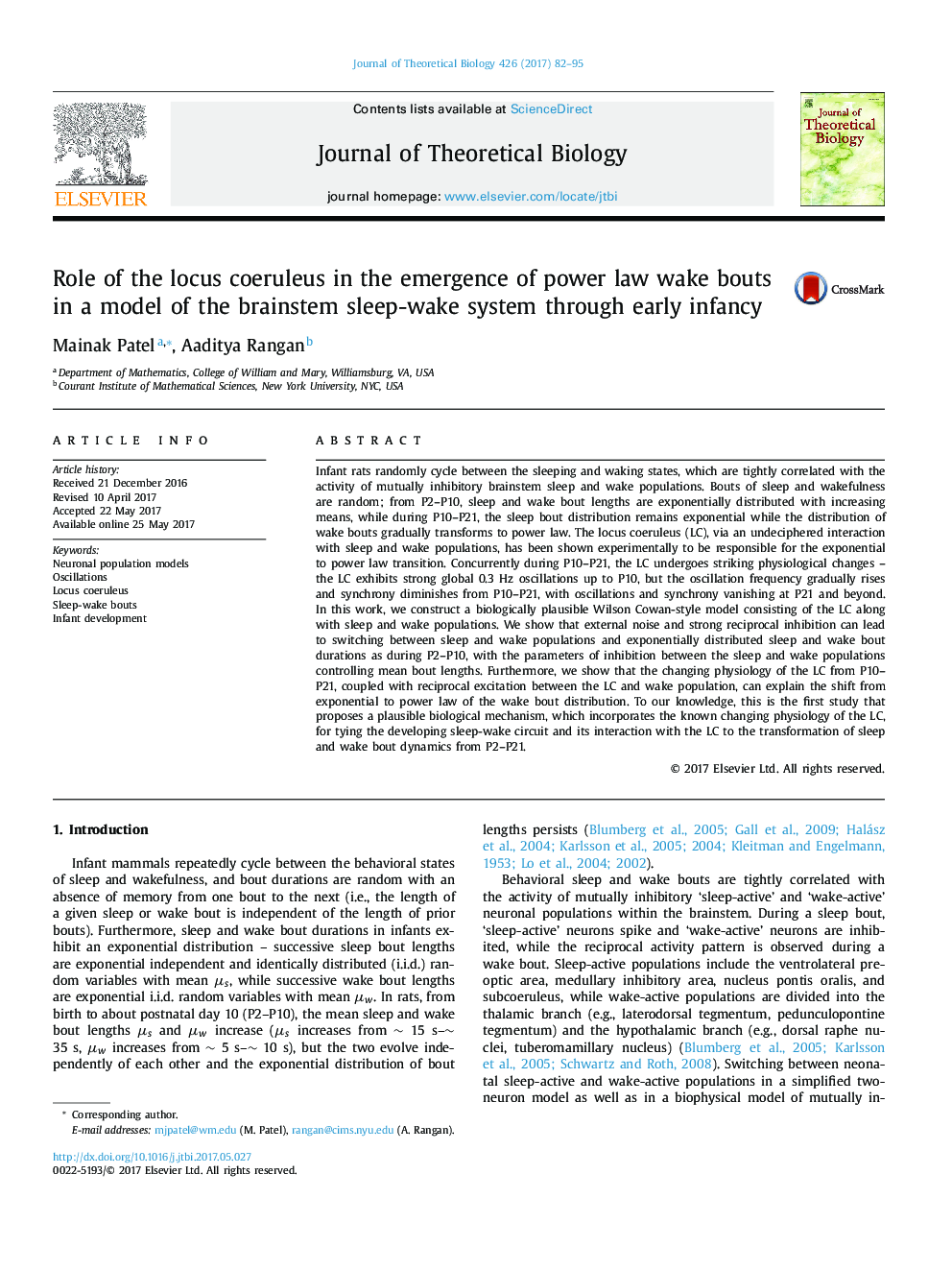| Article ID | Journal | Published Year | Pages | File Type |
|---|---|---|---|---|
| 5759947 | Journal of Theoretical Biology | 2017 | 14 Pages |
Abstract
Infant rats randomly cycle between the sleeping and waking states, which are tightly correlated with the activity of mutually inhibitory brainstem sleep and wake populations. Bouts of sleep and wakefulness are random; from P2-P10, sleep and wake bout lengths are exponentially distributed with increasing means, while during P10-P21, the sleep bout distribution remains exponential while the distribution of wake bouts gradually transforms to power law. The locus coeruleus (LC), via an undeciphered interaction with sleep and wake populations, has been shown experimentally to be responsible for the exponential to power law transition. Concurrently during P10-P21, the LC undergoes striking physiological changes - the LC exhibits strong global 0.3Â Hz oscillations up to P10, but the oscillation frequency gradually rises and synchrony diminishes from P10-P21, with oscillations and synchrony vanishing at P21 and beyond. In this work, we construct a biologically plausible Wilson Cowan-style model consisting of the LC along with sleep and wake populations. We show that external noise and strong reciprocal inhibition can lead to switching between sleep and wake populations and exponentially distributed sleep and wake bout durations as during P2-P10, with the parameters of inhibition between the sleep and wake populations controlling mean bout lengths. Furthermore, we show that the changing physiology of the LC from P10-P21, coupled with reciprocal excitation between the LC and wake population, can explain the shift from exponential to power law of the wake bout distribution. To our knowledge, this is the first study that proposes a plausible biological mechanism, which incorporates the known changing physiology of the LC, for tying the developing sleep-wake circuit and its interaction with the LC to the transformation of sleep and wake bout dynamics from P2-P21.
Related Topics
Life Sciences
Agricultural and Biological Sciences
Agricultural and Biological Sciences (General)
Authors
Mainak Patel, Aaditya Rangan,
